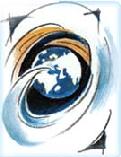


![[INTERNATIONALE ENTWICKLUNGSZUSAMMENARBEIT]](/images/digbib/d_digbib.gif)

TEILDOKUMENT:
Glossary
International Women's Day
The International Women's Day is in the tradition of women workers' union struggle. Its date, March 8, commemorates a textile women workers' strike in New York in 1857. Fifty years later, in 1909, fifty thousand New York shirt seamstresses went on strike and organised protest marches. The slogan "We want bread and roses" illustrated their struggle against inhumane working conditions and their fight for equal wages for men and women. Several thousand women were arrested, but after two months of strike, the seamstresses' demands came through. Three years after the protest marches, the women textile workers founded their own labour union. The International Women's Day goes back to an initiative of Klara Zetkin. The Socialist Women's Conference, held in Copenhagen in 1910, approved its regular celebration. The first International Women's Day in Germany was held on 19 March 1911, the anniversary of the Revolution of 1848.
(Source: Renate Wurms, Der Internationale Frauentag. Wir wollen Freiheit, Frieden, Recht. Frankfurt am Main, 1980)
International Labour Organisation
The International Labour Organisation (ILO) was founded in 1919 with headquarters in Geneva. Initially an organisation of the League of Nations and since 1946 a subsidiary organisation of the UN, the main aim of the ILO is the achievement of a better working world. Over 150 states are members of the ILO. Structured according to the tripartite principle, governments, workers and employers organisations are represented on all committees and organisations of the ILO. The decision-making body of the ILO is the annual International Labour Conference, also called the "World Parliament of Work". In tripartite committees, agreements and recommendations are worked out in all fields affecting the working world. In order to become valid, the agreements require ratification by the respective national parliaments. An important task of the annual International Labour Conference is to check-up on the respect of the ratified standards. In relation to women in the working world, two significant agreements have so far been passed:
- protection of motherhood, ratified by 45 countries;
- night work of women, ratified by 59 countries.
A department on women workers issues exists since 1976. In terms of the professional situation of women in the Third World, the ILO has identified the following major problems:
- lack of jobs and training for women in industry;
- insufficient promotion of rural women.
Source: Rolf Neuhaus: International Trade Secretariats. Objectives, organisation, activities.Bonn 1982.
International Textile, Garment and Leather Workers Federation
This organisation is a world-wide federation of free trade unions in the field of textiles, garment and leather industries (ITGLWF). The organisation belongs to the family of International Trade Secretariats, the world-wide association of industrial and branch trade unions into 14 federations. The aim of Trade Secretariats is the world-wide protection and enforcement of trade union rights and acts of solidarity within the world-wide trade union movement. As a result, the ITGLWF is an important forum for dialogue in this area between trade unions of develloping and industrialised countries. Protection of women and male workers against exploitation and health risks in the workplace are the prime aims of Trade Secretariats. They actively support member trade unions in matters concerning wages and labour legislation. Through cooperation in national and international committees, the demands of workers in industrial branches are vigorously represented. Continental secretariats take-up specific questions concerning a region and promote selective group work within the trade unions, for example, women. In this way, the Asiatic regional organisation of textile workers (TWARO) has approved a minimum catalogue concerning employment conditions of women in the textile field and has introduced this into the national work of member trade unions. The formation of free trade unions in the former communist states in Eastern and South-Eastern Europe is the latest challenge, both in terms of organisation and content, which is facing the Trade Secretariats. From the Federal Republic of Germany, the Trade Union Textile and Garment and the Trade Union Leather are members of the ITGLWF.
Source: Rudolf Dertinger: Menschlich arbeiten - menschlich leben. Internationale Arbeitsorganisation - Ein Handbuch für Gewerkschafter. Köln 1987.
Multi-Fibre Arrangement
Since its creation in 1974, the Multi-Fibre Arrangement or World Textile Agreement (WTA) regulates international trade in textiles and clothing. It concerns here a special agreement to GATT (General Agreement on Tariffs and Trade). Notwithstanding the basic regulations of GATT, the WTA allows for selective supply restrictions vis-à-vis a country or a group of countries. The WTA lays down rules according to which individual textile trade agreements between supplier and customer countries are to be organised. The WTA is an instrument of industrialised countries against the supply of cheap textiles from developing countries. In the framework of a general customs and trade agreement, the WTA should be rescinded and international trade in textiles be put back under normal GATT rules. The WTA should expire after a transitional period of about ten years. Disputed is the question of which steps will be taken to achieve the transfer to GATT.
Recommended reading: Benno Engels: Multifaserabkommen und GATT-Verhandlungen. In: Nord-Süd-aktuell. 1. Quartal 1990, Hamburg.
© Friedrich Ebert Stiftung | technical support | net edition fes-bibliothek